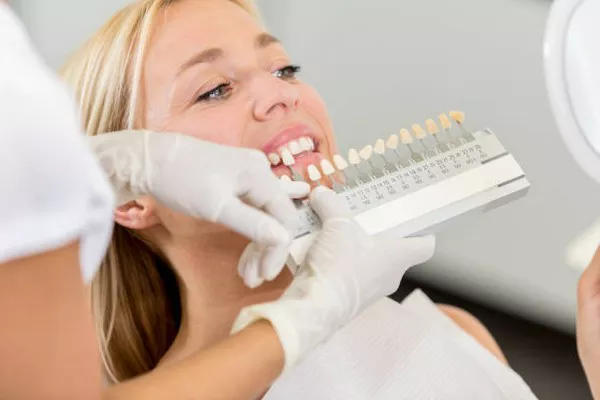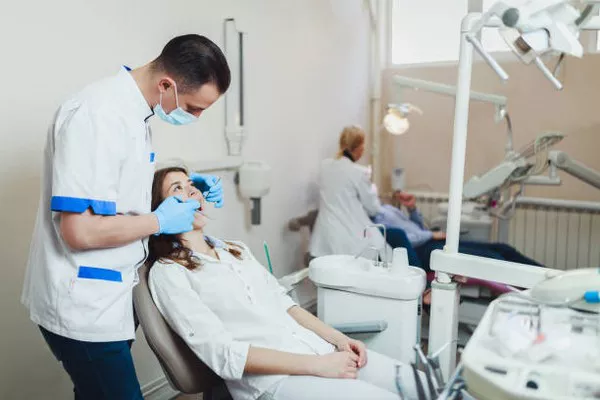Smiling is a universal human expression that communicates joy, happiness, and confidence. However, many people are self-conscious about their teeth‘ appearance, particularly when it comes to discoloration. Teeth staining can be caused by multiple factors, such as genetics, age, diet, and lifestyle habits.
Teeth whitening has become increasingly popular in recent years, with many people seeking out treatments to brighten their smile and boost their confidence. One emerging teeth whitening technology is LED light therapy. In this article, we will examine the science behind LED teeth whitening and how it can help you achieve a brighter, healthier-looking smile.
What is LED Teeth Whitening?
LED teeth whitening is an innovative procedure designed to remove stains on the surface of the teeth and penetrate deep into the enamel for lasting results. The treatment involves applying a whitening gel to the teeth and exposing them to blue LED light for a specified period. Depending on the type of treatment used, sessions can last from 10 minutes to an hour.
The whitening gel typically contains hydrogen peroxide or carbamide peroxide, which works by breaking down the stain molecules on the teeth’ surface. LED light helps to accelerate this process, making it more effective and efficient.
How Does LED Light Work?
LED light therapy has been used in various medical fields to promote healing and cell regeneration. In teeth whitening, LED light is used to activate the whitening gel and enhance its effectiveness.
The blue LED light used in teeth whitening devices emits a specific wavelength of light that targets the chromophores (color-causing molecules) in the stain molecules. This causes a photochemical reaction that breaks down the bonds between the chromophores and the stain molecules, effectively removing the discoloration.
In addition to breaking down stain molecules, LED light therapy also stimulates the production of collagen and elastin in the teeth’ tissues. This helps to strengthen and repair damaged enamel, resulting in a brighter, healthier-looking smile.
Benefits of LED Teeth Whitening
There are numerous benefits to choosing LED teeth whitening over other teeth whitening methods. For starters, LED teeth whitening is non-invasive and painless, making it an ideal option for people with sensitive teeth or gums. The treatment is also quick, with some sessions lasting as little as 10 minutes, making it a convenient choice for busy individuals.
Another significant advantage of LED teeth whitening is its long-lasting results. Unlike other teeth whitening treatments that need to be repeated regularly, LED teeth whitening can provide lasting results for up to six months or more with proper care and maintenance.
Risks and Side Effects
While LED teeth whitening is generally considered safe, there are some potential risks and side effects to be aware of. The most common side effect is tooth sensitivity, which can occur when the whitening gel penetrates too deeply into the tooth’s layers. This sensitivity typically resolves on its own within a few days but can be managed with desensitizing products or shorter treatment times.
Other potential side effects include gum irritation or inflammation, particularly if the whitening gel comes into contact with the soft tissue. It is essential to follow the manufacturer’s instructions carefully and avoid overapplying the gel to minimize this risk.
It is also important to note that LED teeth whitening is not suitable for everyone. People with existing dental issues, such as gum disease, cavities, or exposed roots, should consult with their dentist before undergoing any teeth whitening treatment. Pregnant or lactating women should also avoid teeth whitening, as the effects on the developing fetus or infant are unknown.
Home vs. Professional LED Teeth Whitening
There are two main types of LED teeth whitening: home and professional. Home LED teeth whitening involves using an at-home kit that includes a whitening gel and LED light device. These kits can be purchased over-the-counter or online and are typically less expensive than professional treatments.
Professional LED teeth whitening is performed in a dental office by a trained dental professional. This treatment typically involves a higher concentration of whitening gel and more powerful LED lights, resulting in faster and more dramatic results. Professional treatments can also be customized to address specific areas of discoloration or staining, such as deep-set stains or yellowing caused by aging.
While home LED teeth whitening may seem like a more convenient and cost-effective option, it is essential to consider the potential risks and limitations. Over-the-counter kits may not be as effective or safe as professional treatments, particularly when it comes to managing tooth sensitivity or avoiding gum irritation. It is always advisable to consult with a dental professional before undertaking any teeth whitening treatment.
Conclusion
LED teeth whitening is an innovative and effective way to achieve a brighter, healthier-looking smile.
Related Topics:




























